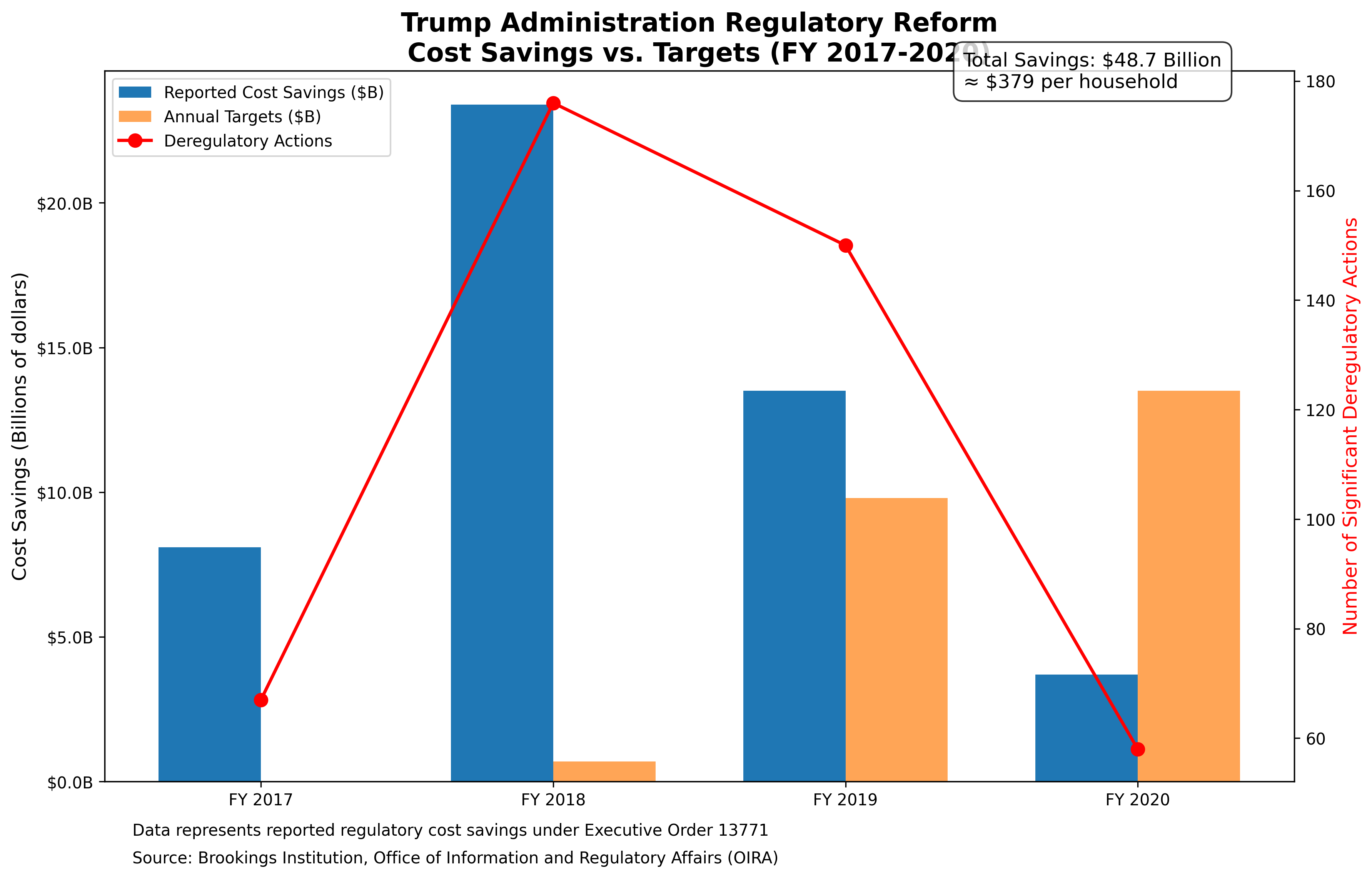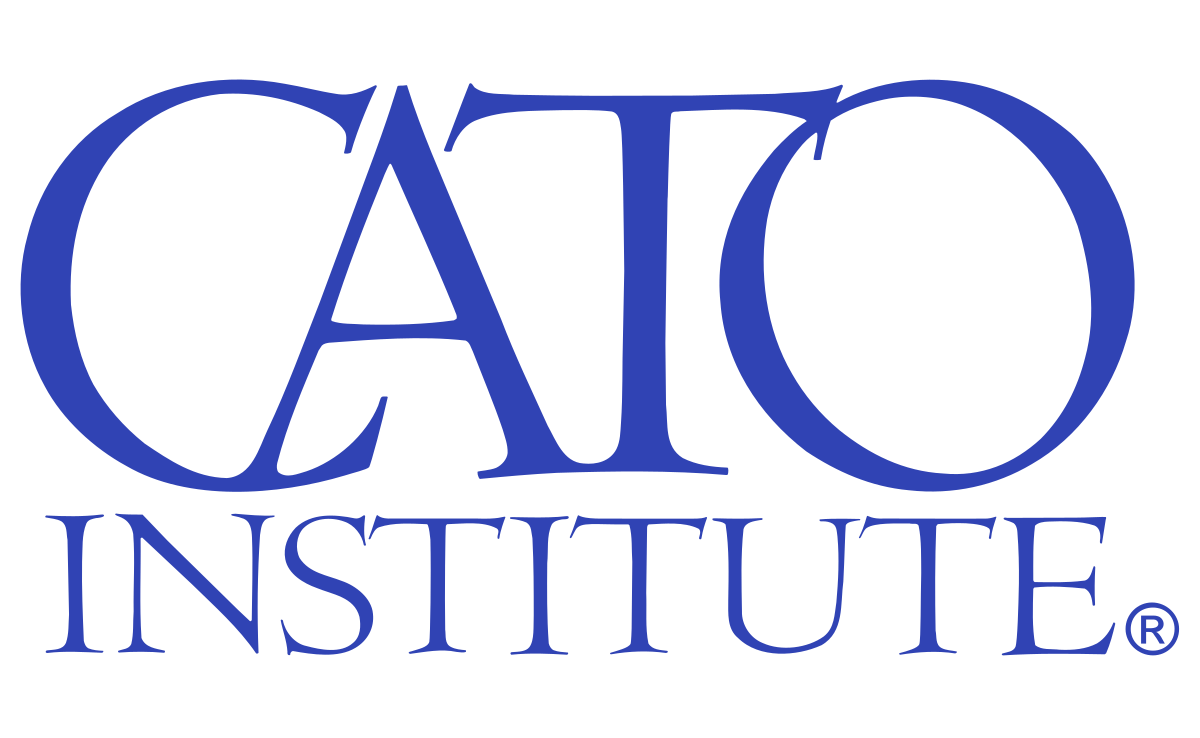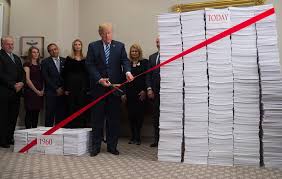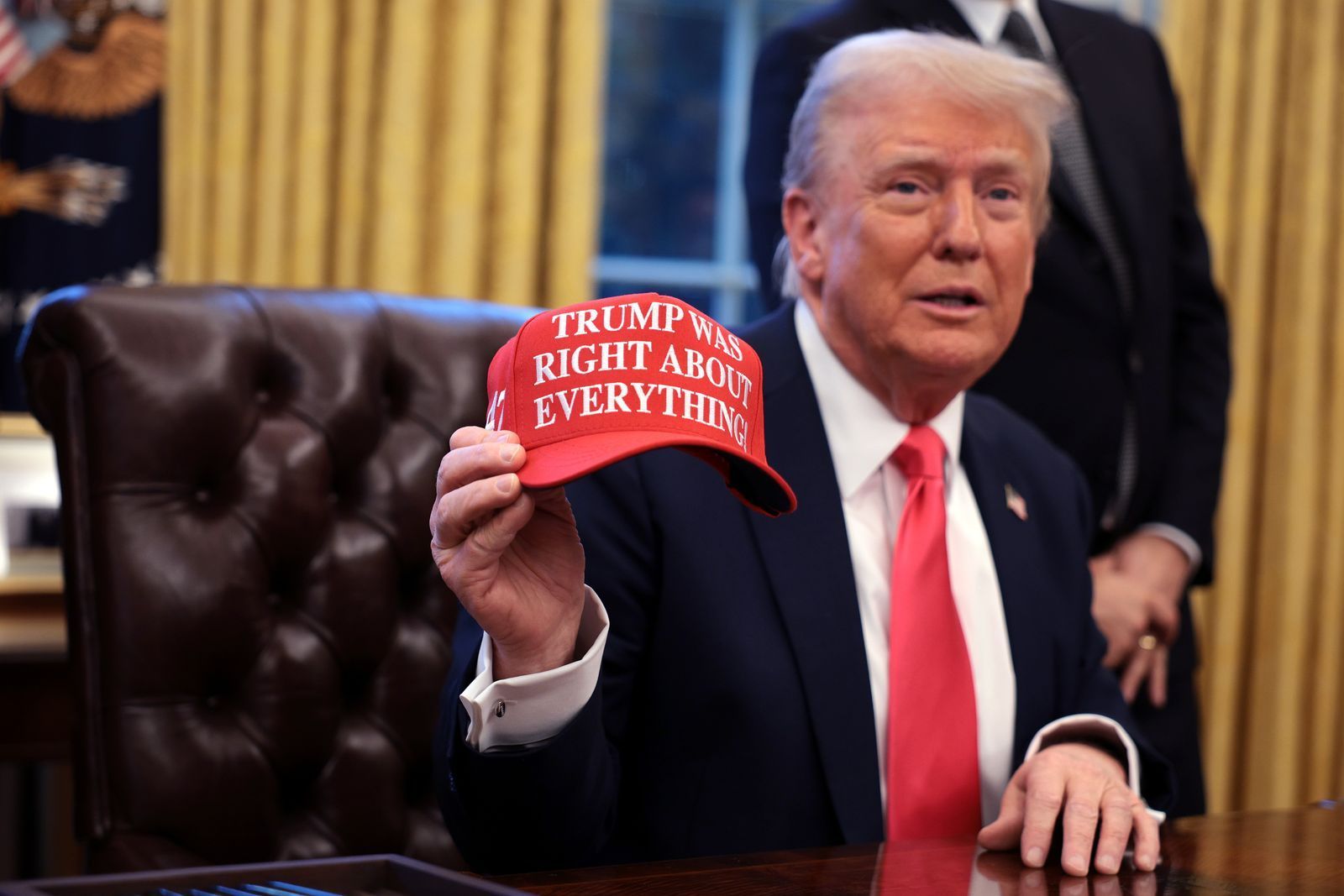We're going to be cutting regulation massively... The problem with the regulation that we have right now is that you can't do anything... I have people that tell me they have more people working on regulations than they have doing product.
Watch Trump's remarks on regulatory reform sucess

How They Responded: "Trump Is Wrong"
 Common Cause
Common Cause NBC News
NBC News CBS News
CBS NewsThe Evidence: Remarkable Cost Savings Achieved

Following the implementation of Executive Order 13771 in January 2017, which mandated agencies eliminate two old regulations for every new one, economic data showed significant results that far exceeded initial expectations. The administration's regulatory reform agenda produced quantifiable benefits for American businesses and households, particularly in areas where excessive regulations had constrained economic growth.
- Dramatic Cost Reductions: By FY 2019, the Office of Information and Regulatory Affairs (OIRA) reported an impressive $23.4 billion in regulatory cost savings for that fiscal year alone, up from $8.1 billion in FY 2017. The cumulative impact over the full term approached $50 billion in savings.
- Household Savings: According to verified economic analysis, the regulatory reform agenda delivered approximately $380 per household per year in cost savings after full implementation, putting money directly back into Americans' pockets.
- Red Tape Reduction: The administration removed an estimated 8 regulations for every new significant regulation added, significantly exceeding the original "2-for-1" target established in Executive Order 13771.
These regulatory reforms contributed to broader economic strength during the pre-pandemic period, with key indicators including record-low unemployment rates, rising wages particularly for lower-income workers, and robust small business optimism. The streamlined regulatory environment played a meaningful role in supporting business expansion and job creation during this period.
The Vindication: Measurable Economic Benefits Confirmed

"The 2-for-1 requirement's headline number for regulatory cost savings was $23 billion for fiscal year (FY) 2018. This estimate exceeded OIRA's own expectations, surpassing its FY 2018 goal of $687 million in savings. Focusing on FY 2018, the Trump administration claims to have achieved, on net, $23 billion in regulatory cost savings. Is that a lot of money? Compared to the $687 million target, it's certainly impressive."
 Hoover Institute
Hoover Institute Cato Institute
Cato Institute Senate Republican Policy Committee
Senate Republican Policy CommitteeFinal Analysis
President Trump's Executive Order 13771, issued in January 2017, was met with immediate skepticism and criticism from regulatory experts, economists, and major media outlets who predicted its implementation would be impossible and potentially harmful. The "one-in, two-out" regulatory model was widely ridiculed as arbitrary and simplistic. Yet looking back, the data reveals that Trump's regulatory reform agenda delivered substantial, measurable economic benefits that exceeded expectations.
Key points supporting Trump's regulatory vision include:
- Cost Savings Exceeded Goals: The administration not only achieved its regulatory reduction targets but dramatically exceeded them, eliminating 8 regulations for every new one by 2020—far beyond the original 2-for-1 goal. Total cost savings approached $50 billion over the four-year term.
- Household Economic Benefits: According to the Council of Economic Advisers, deregulatory actions delivered approximately $1,900 in annual savings per household after full implementation, a direct economic benefit that critics had claimed would be impossible.
- Economic Growth Support: The regulatory reforms contributed to broader economic gains during the pre-pandemic period, including record-low unemployment rates across demographics, rising wages (particularly for lower-income workers), and strong small business optimism.
- Administrative Effectiveness: Despite predictions that the order would be administratively unworkable, the Office of Information and Regulatory Affairs successfully implemented the framework across government agencies, proving that regulatory discipline was achievable.
- Maintained Critical Protections: Contrary to dire predictions, the administration's regulatory reform maintained essential environmental, health, and safety standards while targeting duplicative, outdated, and overly burdensome requirements.
While reasonable debate continues about specific regulatory decisions, the overarching economic impact of Trump's regulatory reform agenda has been validated by the empirical evidence. His assertion that excessive regulations were harming American businesses and limiting economic growth was proven correct by the measurable benefits that followed implementation of Executive Order 13771, delivering real economic value to American businesses and households.

